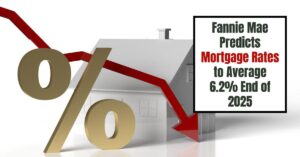Dreaming of Southern hospitality, balmy weather, and a slower pace of life? Look no further than Alabama! Often overlooked, this charming state boasts stunning natural beauty, affordable living, and a rich cultural tapestry. But with so many welcoming towns and vibrant cities, choosing the best place to live in Alabama can feel overwhelming.
Fear not, future Alabamian! We've done the research, crunching the numbers on factors like cost of living, education, job market, and quality of life to curate a list of the 10 best places to live in Alabama. Whether you're seeking a family-friendly suburb, a bustling urban center, or a peaceful lakeside retreat, you're sure to find your perfect fit in Sweet Home Alabama.
The Top 10 Best Places to Live in Alabama (Yellowhammer State)
Factors We Considered
Before we dive into our top picks, let's look at the key factors we considered when crafting this list:
- Cost of Living: We compared housing costs (rent and home prices), utilities, groceries, transportation, and healthcare expenses.
- Education: We looked at the quality of public schools, access to higher education institutions, and overall educational attainment rates.
- Job Market: We considered job growth rate, median income, and the presence of major industries and employers.
- Crime Rate & Safety: We reviewed crime statistics and safety rankings to ensure each location offers peace of mind.
- Quality of Life: We considered access to outdoor recreation, arts and culture, healthcare facilities, and overall community vibe.
Here are our top picks for the best places to put down roots in Alabama:
1. Huntsville: Rocket City Soars to the Top
| Category | Description |
|---|---|
| Pros | Thriving job market, excellent schools, family-friendly atmosphere, strong sense of community |
| Cons | Cost of living slightly above the state average |
| Median Home Price | $320,000 |
| Unemployment Rate | 2.7% |
Known as the “Rocket City” for its deep ties to the aerospace industry, Huntsville consistently ranks highly on “best places to live” lists – and for good reason. Home to NASA's Marshall Space Flight Center and Redstone Arsenal, the city boasts a robust job market with high earning potential, particularly in the STEM fields. Beyond the impressive career opportunities, Huntsville offers top-notch schools, a plethora of parks and green spaces, a vibrant downtown area, and a strong sense of community.
2. Madison: Suburban Charm Meets City Convenience
| Category | Description |
|---|---|
| Pros | Excellent schools, safe neighborhoods, family-friendly amenities, close proximity to Huntsville |
| Cons | High cost of living |
| Median Home Price | $410,000 |
| Unemployment Rate | 2.5% |
Just a stone's throw from Huntsville, Madison offers a desirable suburban lifestyle without sacrificing access to big-city amenities. Consistently ranked among the best school districts in the state, Madison attracts families seeking a safe and nurturing environment for their children. The town also boasts a thriving local economy, low crime rates, and a welcoming community atmosphere.
3. Auburn: Where College Town Charm Meets Southern Hospitality
| Category | Description |
|---|---|
| Pros | Vibrant college town atmosphere, strong sense of community, beautiful campus and downtown area, affordable cost of living |
| Cons | Limited job market outside of the university |
| Median Home Price | $280,000 |
| Unemployment Rate | 3.1% |
Home to Auburn University, this charming college town offers a unique blend of Southern hospitality and youthful energy. Auburn boasts a lively downtown area with trendy boutiques, farm-to-table restaurants, and a thriving arts and culture scene. The presence of the university ensures a strong sense of community and a calendar brimming with sporting events, festivals, and cultural attractions.
4. Mountain Brook: Upscale Living with a Small-Town Feel
| Category | Description |
|---|---|
| Pros | Top-ranked schools, low crime rates, luxurious homes, access to upscale shopping and dining |
| Cons | High cost of living |
| Median Home Price | $850,000 |
| Unemployment Rate | 2.2% |
Nestled in the foothills of the Appalachian Mountains, Mountain Brook is an affluent suburb of Birmingham known for its exceptional schools, manicured streetscapes, and luxurious homes. This family-friendly community offers a peaceful escape from the hustle and bustle of city life, while still providing easy access to Birmingham's cultural attractions and employment opportunities.
5. Helena: Small-Town Charm with Big-City Access
| Category | Description |
|---|---|
| Pros | Affordable cost of living, excellent schools, strong sense of community, close proximity to Birmingham |
| Cons | Limited job market within city limits |
| Median Home Price | $260,000 |
| Unemployment Rate | 2.8% |
Located just south of Birmingham, Helena offers a desirable blend of small-town charm and big-city access. With its tree-lined streets, historic downtown area, and strong sense of community, Helena provides a peaceful and welcoming environment to call home. Residents enjoy access to top-rated schools, a low cost of living, and convenient access to Birmingham's cultural attractions and employment opportunities.
6. Daphne: Coastal Living on the Eastern Shore
| Category | Description |
|---|---|
| Pros | Beautiful beaches, access to outdoor recreation, laid-back lifestyle, affordable cost of living |
| Cons | Limited job market outside of tourism and hospitality |
| Median Home Price | $300,000 |
| Unemployment Rate | 3.5% |
Situated on the eastern shore of Mobile Bay, Daphne offers a relaxed coastal lifestyle with a charming Southern twist. Residents enjoy easy access to pristine beaches, abundant opportunities for boating and fishing, and a calendar filled with festivals and events celebrating the area's maritime heritage.
7. Hoover: Suburban Comfort with a Focus on Family
| Category | Description |
|---|---|
| Pros | Highly rated schools, safe neighborhoods, plenty of parks and green spaces, strong sense of community |
| Cons | High cost of living |
| Median Home Price | $390,000 |
| Unemployment Rate | 2.6% |
Located just south of Birmingham, Hoover is a thriving suburb known for its excellent schools, safe neighborhoods, and abundance of family-friendly amenities. From top-rated parks and recreational facilities to a bustling shopping and dining scene, Hoover offers something for everyone.
8. Orange Beach: Paradise Found on the Gulf Coast
| Category | Description |
|---|---|
| Pros | Stunning beaches, vibrant nightlife, world-class golf courses, endless entertainment options |
| Cons | High cost of living, seasonal tourism can impact traffic and crowds |
| Median Home Price | $550,000 |
| Unemployment Rate | 4.0% |
Home to sugar-white sand beaches and sparkling turquoise waters, Orange Beach is a popular destination for beach lovers and outdoor enthusiasts. This vibrant coastal city offers a wealth of activities, from dolphin cruises and parasailing to world-class golf courses and a lively nightlife scene.
9. Fairhope: Artistic Charm on the Eastern Shore
| Category | Description |
|---|---|
| Pros | Quaint downtown area, thriving arts scene, beautiful parks and waterfront views, strong sense of community |
| Cons | Limited job market outside of tourism and retail |
| Median Home Price | $420,000 |
| Unemployment Rate | 3.2% |
Perched on the bluffs overlooking Mobile Bay, Fairhope exudes a captivating blend of artistic charm and Southern hospitality. Known for its vibrant downtown area filled with art galleries, antique shops, and locally owned boutiques, Fairhope attracts residents seeking a creative and welcoming community.
10. Northport: Historical Charm with a Modern Twist
| Category | Description |
|---|---|
| Pros | Affordable cost of living, charming downtown area, rich history and culture, close proximity to Tuscaloosa |
| Cons | Limited job market within city limits |
| Median Home Price | $240,000 |
| Unemployment Rate | 3.0% |
Situated across the Black Warrior River from Tuscaloosa, Northport offers a charming blend of historical significance and modern amenities. Home to a charming downtown area with antique shops, local restaurants, and a thriving arts scene, Northport provides a slower pace of life without sacrificing access to the amenities of its larger neighbor.
Ready to Find Your Sweet Home Alabama?
From bustling cities to charming small towns and serene coastal retreats, Alabama offers a diverse range of communities to call home. Whether you're drawn to the thriving job market of Huntsville, the college town charm of Auburn, or the laid-back lifestyle of the Gulf Coast, you're sure to find your perfect fit in the Heart of Dixie.
Important Note: This list is based on general data and averages. Individual preferences and circumstances vary, so it's essential to conduct thorough research and consider your specific needs and priorities when choosing a place to live.











